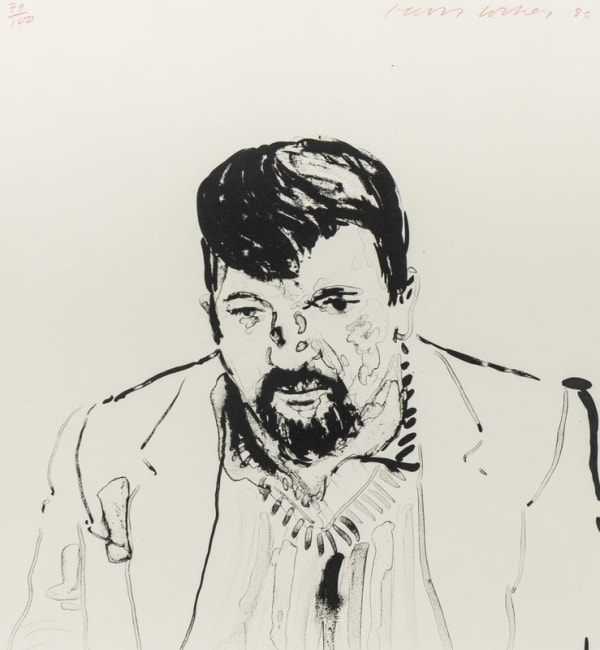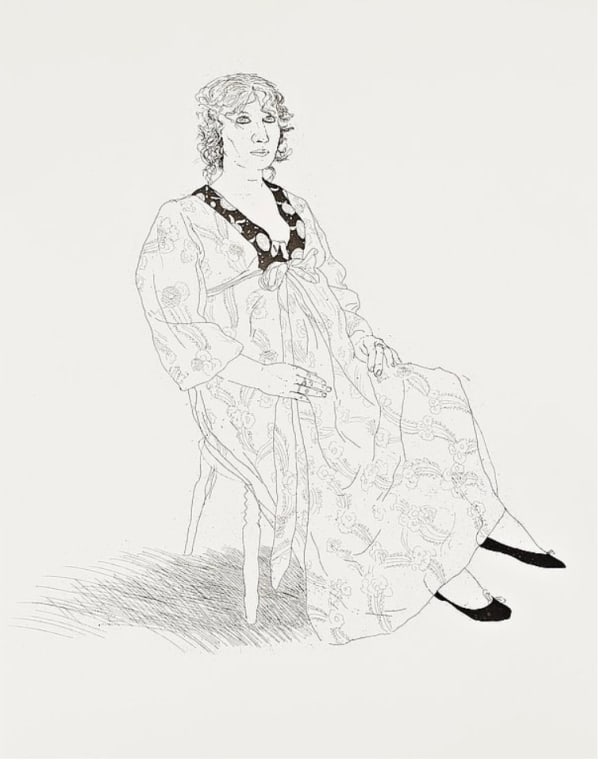David Hockney
David Hockney, one of the most influential British artists of the 20th and 21st centuries, was born on July 9, 1937, in Bradford, England. The fourth of five children, he showed an early interest in art, drawing from a young age. Hockney attended the Bradford College of Art from 1953 to 1957, where he developed his foundational skills and artistic vision. He continued his education at the Royal College of Art in London, earning his diploma in 1962. While at the Royal College, Hockney was part of a generation of artists that included R.B. Kitaj and Peter Blake, who would later be associated with the British Pop Art movement.
Rise to Fame
Hockney’s early work was characterized by a combination of figurative painting and printmaking, often exploring themes of homosexuality and personal identity at a time when such subjects were considered controversial. His distinct style, which combined bold colors, playful compositions, and an interest in contemporary life, quickly garnered attention. One of his first major successes came with the series of etchings titled “A Rake’s Progress” (1961-63), which chronicled his experiences in New York City.
California and Swimming Pools
In 1964, Hockney moved to Los Angeles, where he found a new source of inspiration in the city’s light, landscape, and lifestyle. This period marked the beginning of his iconic swimming pool paintings, such as “A Bigger Splash” (1967), which remain some of his most recognizable works. These paintings are characterized by their clean lines, vibrant colors, and depiction of serene, sun-drenched environments.
Portraits and Photography
Throughout his career, Hockney has been fascinated by portraiture, capturing friends, family, and lovers with a keen eye for detail and emotion. His double portraits, such as “Mr and Mrs Clark and Percy” (1970-71), highlight his ability to convey complex relationships and psychological depth. In the 1980s, Hockney began experimenting with photography, creating photo collages known as “joiners,” which combined multiple Polaroid snapshots or 35mm prints to form a single image. This technique allowed him to explore different perspectives and dimensions within a single frame.
iPad Paintings and Digital Art
In the late 2000s and 2010s, Hockney embraced digital technology, incorporating it into his artistic practice. He began creating works on iPads and iPhones, using these devices to sketch and paint digitally. This new medium allowed Hockney to capture the spontaneity and immediacy of his observations with vibrant colors and dynamic compositions. The iPad paintings often depict landscapes, flowers, and everyday scenes, showcasing Hockney’s ability to innovate while staying true to his artistic roots.
One notable series is “The Arrival of Spring in Woldgate, East Yorkshire in 2011 (twenty eleven),” which features large-scale prints of digital paintings created on an iPad. These works, exhibited at the Royal Academy of Arts in London, demonstrate Hockney’s fascination with capturing the changing seasons and the beauty of the natural world through modern technology.
Return to Painting and Later Work
In addition to his digital art, Hockney continued to create traditional paintings, exploring new techniques and subjects. His large-scale landscapes, such as those depicting the Yorkshire Wolds, demonstrated his ongoing fascination with capturing light, space, and the natural world. He also experimented with multi-canvas paintings, creating immersive and expansive works that envelop the viewer.
Legacy and Influence
David Hockney’s contributions to art extend beyond his innovative techniques and iconic images. He has been a vocal advocate for the importance of looking closely and appreciating the visual world, emphasizing the role of perception in art. Hockney’s work has been exhibited in major museums and galleries worldwide, and he has received numerous awards and honors, including the Order of Merit from Queen Elizabeth II in 2012.
Personal Life
Hockney has been openly gay throughout his career, and his personal life and relationships have often influenced his work. He splits his time between California and Yorkshire, maintaining a close connection to both places. Despite experiencing health challenges in recent years, Hockney continues to create and innovate, remaining a vital figure in contemporary art.
David Hockney’s enduring legacy lies in his ability to capture the essence of his subjects with clarity, color, and a sense of immediacy that resonates with audiences worldwide. His work continues to inspire new generations of artists and art lovers, securing his place as a true icon of modern art.



